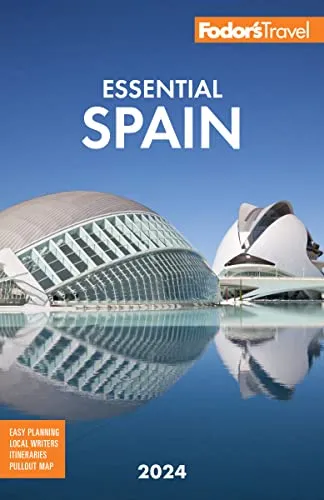Galicia and Asturias
Galicia and Asturias
Spain's westernmost region is en route to nowhere, an end in itself. This magical, remote area is sure to pull at your heartstrings, so be prepared to fall in love. In Gallego they call the feeling morriña, a powerful longing for a person or place you've left behind.
Stretching northwest from the lonesome Castilian plains to the rocky seacoast, Asturias and Galicia incorporate lush hills and vineyards, gorgeous rías (estuaries), and the country's wildest mountains, the Picos de Europa. Santander and the entire Cantabrian region are cool summer refuges with sandy beaches, high sierras (including part of the Picos de Europa), and tiny highland towns. Santander, once the main seaport for Old Castile on the Bay of Biscay, is in a mountainous zone wedged between the Basqu...
Read MoreSpain's westernmost region is en route to nowhere, an end in itself. This magical, remote area is sure to pull at your heartstrings, so be prepared to fall in love. In Gallego they call the feeling morriña, a powerful longing for a person or place you've left behind.
Stretching northwest from the lonesome Castilian plains to the rocky seacoast, Asturias and Galicia incorporate lush hills and vineyards, gorgeous rías (estuaries), and the country's wildest mountains, the Picos de Europa. Santander and the entire Cantabrian region are cool summer refuges with sandy beaches, high sierras (including part of the Picos de Europa), and tiny highland towns. Santander, once the main seaport for Old Castile on the Bay of Biscay, is in a mountainous zone wedged between the Basque Country and Asturias.
Northwestern Spain is a series of rainy landscapes, stretching from your feet to the horizon. Ancient granite buildings wear a blanket of moss, and even the stone hórreos (granaries) are built on stilts above the damp ground. Swirling fog and heavy mist help keep local folktales of the supernatural alive. Rather than a guitar, you'll hear the gaita (bagpipe), a legacy of the Celts' settlements here in the 5th and 6th centuries BC. Spanish families flock to these cool northern beaches and mountains each summer. Santiago de Compostela, where the cathedral holds the remains of the apostle James, has drawn pilgrims for 900 years, leaving churches, shrines, and former hospitals in their path. Asturias, north of the main pilgrim trail, has always maintained a separate identity, isolated by the rocky Picos de Europa. This and the Basque Country are the only parts of Spain never conquered by the Moors, so Asturian architecture shows little Moorish influence. It was from a mountain base at Covadonga that the Christians won their first decisive battle against the Moors and launched the Reconquest of Spain. Despite being very much its own region, Cantabria is in spirit much closer to Asturias—with which it shares the Picos de Europa, Castilian Spanish, and similar architecture—than its passionately independent neighbor, the Basque Country.
Recommended Fodor’s Video
Hotels
Things to Do
Things to Do
Explore Things to Do
Find the perfect tours and activities in Galicia and Asturias.
Where to Eat
Where to Eat
Need to Know
Need to Know
Language
SpanishNearby Airports
SCQ, VGO, SDR, OVDElectrical Outlets
220v/50 cycles; electrical plugs have two round prongsCurrency
EuroLanguage
SpanishElectrical Outlets
220v/50 cycles; electrical plugs have two round prongsCurrency
EuroNearby Airports
SCQ, VGO, SDR, OVDNeighborhood Guides
Discover the best neighborhoods in Galicia and Asturias with curated recommendations from our editors.
Neighborhood Guides
Discover the best neighborhoods in Galicia and Asturias with curated recommendations from our editors.
Neighborhood Guides
Discover the best neighborhoods in Galicia and Asturias with curated recommendations from our editors.














